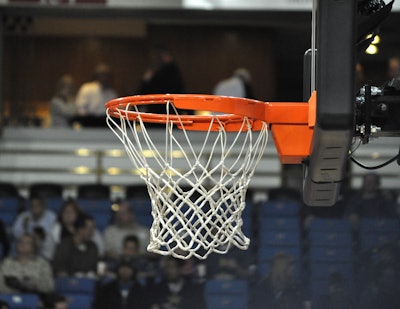March Madness returned in 2021, after being shut down by COVID-19 in 2020. As conferences and the NCAA sought to recover some of the losses associated with last year’s canceled men’s basketball tournament, teams and a very limited number of fans returned to coliseums this spring with restrictions in place, but with cautious optimism and excitement over the perennial spring tournaments.
There were some changes. For example, the full NCAA men’s basketball tournament was hosted in Indiana, rather than leveraging multiple locations around the country. And geography wasn’t a consideration in the bracket construction this year, since everyone was in one place; instead, teams were grouped purely based on ranking. The NCAA also reworked the schedule to minimize game overlap and condense the number of days over which games would be played in each round. Daily PCR tests were to
Most Division 1 conferences were included, but the Ivy League canceled all winter sports for the season out of concern for the potential exposure to COVID-19.
“Regrettably, the current trends regarding transmission of the COVID-19 virus and subsequent protocols that must be put in place are impeding our strong desire to return to intercollegiate athletics competition in a safe manner,” the Ivy League presidents said in a joint statement in November. “While these decisions come with great disappointment and frustration, our commitment to the safety and lasting health of our student-athletes and wider communities must remain our highest priority.”
The men’s basketball tournament accounts for nearly three-fourths of the NCAA’s total annual revenue. Broadcast agreements net $827 million for the NCAA in a non-pandemic year, and the revenue is disbursed to conferences participating in the tournament based on the number of wins participating schools net.
In 2020, because of the canceled tournament, revenue from CBS and Turner Sports amounted to only $113.1 million, according to audited 2020 financials. When losses from ticket sales and other marketing streams were combined, the NCAA lost out on over $800 million in total revenue in 2020. Losses from canceling the tournament alone amounted to a more than 50% revenue decrease from 2019. The NCAA was set to distribute over $600 million to its 1,268 schools directly — funds that many schools rely on to keep their athletics programs afloat — but in the end, only $225 million was available for distribution last year.
Recovering losses















